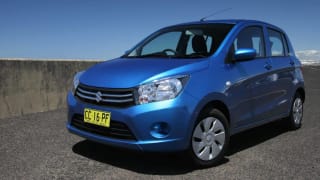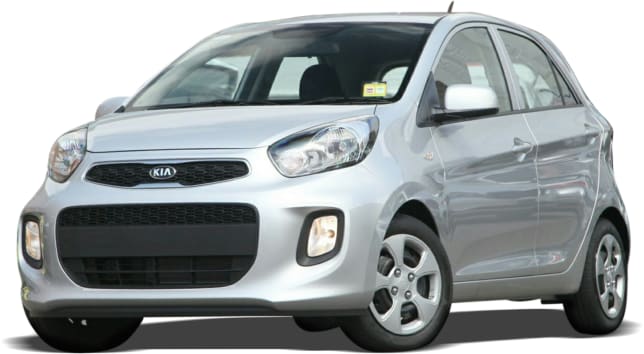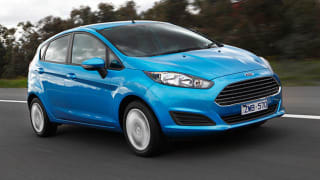Andrew Chesterton road tests and reviews the new Kia Picanto with specs, fuel consumption and verdict.
We've long since accepted that one-time budget player Kia can mix it at the top end of the new car market. But the brand's stripped-back city offering, the Picanto, poses a different question entirely, and one we thought we'd never have to ask: can they still build cheap and cheerful ones?
See, while Kia was busy shifting up-specced versions of its Sorento and Sportage, the entry level space it once dominated was snatched away by the likes of the Mitsubishi Mirage ($12,250) and the Suzuki Celerio ($12,990), both of which attract Learner and Provisional drivers like politicians to an ICAC enquiry.
This new entry point to the Kia brand is an attempt to change that. The Picanto arrived in Australia in April this year wearing a cheap-as-chips sticker price of $14,990 drive-away - a deal that will continue for the foreseeable future. And that might sound like a lot, but the Picanto is available in just the one well-equipped trim level, and it arrives with an automatic transmission as standard.
This Picanto is actually here as a kind of experiment. The next-generation car arrives next year (the one we've got actually launched globally in 2011), but Kia Australia wanted to prove the business case to secure supply of the new model - no small feat considering it's competing in a segment that's been slowly circling the sink hole in our market. But prove it they have, with the Picanto now sitting second in its segment, behind only the Mitsubishi Mirage.
Design
The Kia might be a cut-price offering, but it doesn't immediately look like one. Small but stylish (and kind of like a slightly puffier version of the now-defunct VW Up!), you need to look closely to spot the budget giveaways, like the plastic hub caps hiding 14-inch steel wheels, or the weirdly obvious reversing sensors protruding from the rear of the Picanto like it's just been woken up from the Matrix.
But almost all of Kia's offerings, no matter the price point, look like they're worth more than their stickers. And the Picanto is no different, with its vaguely European design, boxy grille and outside-the-square styling.
It's available in seven colours, with Clear White being the standard pick, while Dazzling Blue, Midnight Black, Honey Bee, Signal Red and Bright Silver are all on the premium list, so picking one will cost you an extra $520.
The standard features list could fit inside a fortune cookie.
Inside, though, it is the very definition of built to a price point. The seats are cloth, the air-conditioning is manual, there's no touch (or even colour, for that matter) screens in the dash, instead offering one of those orange letterbox screens that you control through separate buttons that sit below it. And as a result, it all feels a little old school.
Expect hard plastics, too, with the only cursory nod to fashion the silver splash along the bottom of the steering wheel and the middle of the dash. The seats, though, are comfortable, vision out of the car and over the bonnet is good, and the view out of the rear windscreen (despite the strange shape) is fine, too.
Price and features
At a glance, the $14,990 Picanto seems to have priced itself at the top-end of the budget-car market, but a quick dig into the features list reveals the value in that price tag. For one, the Picanto is an automatic-only proposition, while its cut-price competitors offer a manual gearbox with their entry-level models.
Predictably, the standard features list could fit inside a fortune cookie, but there are some nice, premium touches like power windows front and back, power-operated side mirrors and standard-fit rear parking sensors, though you do miss out on a reversing camera.
Elsewhere, expect a fairly underwhelming four-speaker stereo with steering wheel controls, Bluetooth connectivity and… well, that's about it. The glaring omission here is Android Auto and Apple CarPlay, both of which have revolutionised the tech offerings in budget-friendly cars. The Picanto's old-school multimedia screen won't support it, but expect that to change when the new model is released next year.
Engines and transmissions
Just the single combination on offer for Kia's Picanto, and that's a 1.25-litre petrol engine that will deliver 63kW and 120Nm. It feeds its power through a four-speed automatic transmission before sending it to the front wheels. And while that doesn't sound like a lot, it's worth noting the little Picanto tips the scales at a dainty 994kg, so there isn't a lot of weight to shift around. Still, it's not quick.
It's a comfortable little bopper in the city, and its eager perkiness puts a smile on your face.
The Picanto will sip a claimed/combined 5.3L/100km, but Kia is yet to publish a zero to 100km/h sprint time - though it's possible they're still timing it.
Driving
The Picanto is no speed hunter, but some clever tuning ensures that strictly urban acceleration is surprisingly handy. The little 1.25-litre engine does its best work at city speeds - as it probably should - so the Picanto will climb from a standstill to 50km/h in a brisk enough way. But if longer journeys are on your radar, especially those that might include some kind of overtaking, then you'll soon uncover several deep and dark holes in the Picanto's power delivery.
And that means this is a city car in the truest sense of the word, and one best confined to 50km/h streets. If you're living in the outer suburbs and a freeway forms part of your commute, you'll find it something of a challenge, with acceleration from 80km/h virtually non-existent.
But it's a comfortable little bopper in the city, and its eager perkiness puts a smile on your face. The suspension is firm without being too harsh, and it's not particularly fidgety over bumps or corrugations. The steering, though, does throw up some surprises. When you turn the wheel slightly, nothing really happens, but turn it even a millimetre more and the wheels suddenly bite into the corner. It's not dangerous, but it's not all that predictable either. However, you do get used to it fairly quickly.
Practicality
It's the size of a tennis racquet, so you'd forgive the Picanto if it wasn't particularly practical, but the littlest Kia makes clever use of its limited space to offer up some handy storage.
With all seats in place, boot space is a fairly pokey 200 litres, but that swells to 605 litres when you drop the 60:40 rear seats. That's roughly the same as a standard station wagon (albeit before you drop the seats), so it's actually a fairly useable luggage area if you're not carrying passengers.
You won't find auto emergency braking (AEB), a reversing camera or any of the more high-tech systems
Front riders share two open cupholders in the middle console separating the driver and passenger seats, and there's room for small bottle in the door pockets, along with a bonus storage bin under the stereo. Backseat passengers, however, aren't so lucky: just the single cupholder to fight over, and not much else.
The interior packaging is clever, too. A curve in the design of the front seats helps the backseat passengers with leg room, though it is predictably a little tight back there. And the rear headrests are adjustable, so you can use them when required but get them out of the way of your rear vision when not needed.
Safety
The Picanto arrives with six airbags (dual front, side and curtain bags), along with the standard suite of traction systems including ESC, ABS and traction control. But you won't find auto emergency braking (AEB), a reversing camera or any of the more high-tech systems, with reversing sensors and a crumple-ready body structure about the extent of the extra safety kit.
The Picanto was awarded the maximum five-star ANCAP safety rating when tested in 2016.
Ownership
The Picanto is included in Kia's impressive - and industry-leading - seven-year warranty program, and will require a trip to the service centre every 15,000km or 12 months. Kia's capped-price servicing schedule limits your total costs to $2,345 for your first seven services.















